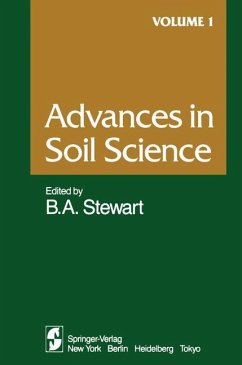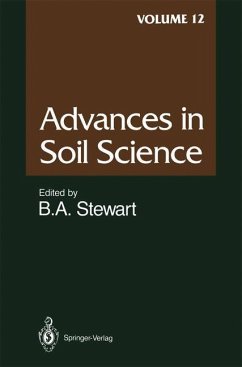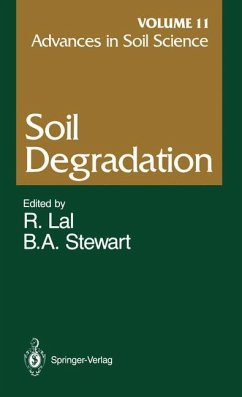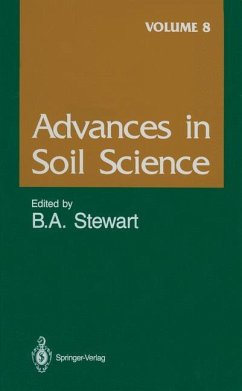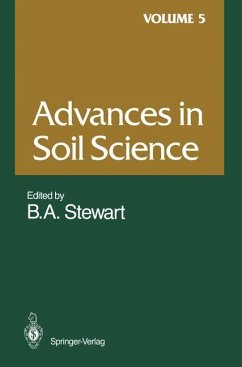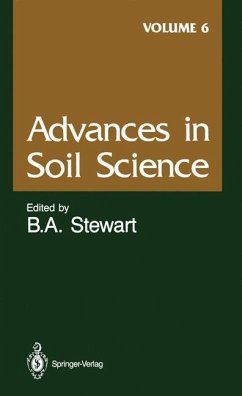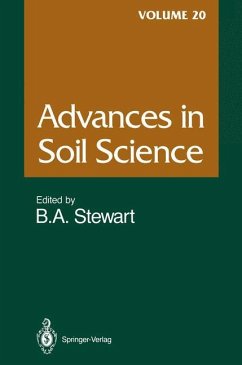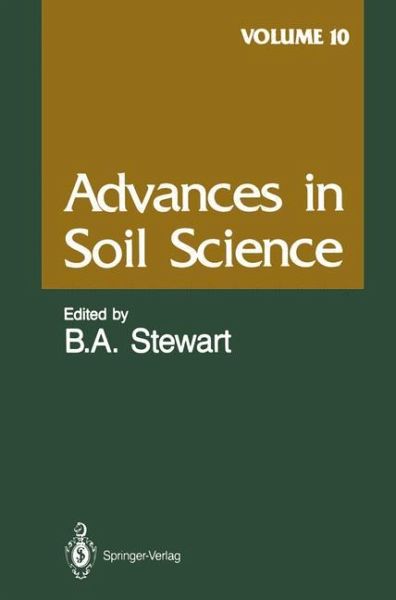
Advances in Soil Science
Volume 10
Mitarbeit: Beauchamp, E. G.; Binkley, D.; Buresh, R. J.; De Datta, S. K.; Hart, S. C.; McBride, M. B.
Versandkostenfrei!
Versandfertig in 1-2 Wochen
77,99 €
inkl. MwSt.

PAYBACK Punkte
39 °P sammeln!
The series of critical reviews, Advances in Soil Science, fills a gap between scientific journals and comprehensive reference books. Scientists can delve into particular subjects. The series was formulated to be international in scope and to cover all subjects relating to soil science. Volume 10 contains contributions from scientists from Canada, the Philippines, and the United States on subjects relating to soil classification, nitrogen availability in forest soils, denitrification, nitrogen management in irrigated rice, and heavy metal solubilities in soils. The technical information herein will be invaluable for anyone concerned with optimizing crop production while conserving the soil as a resource.
Soil is formed from physical and chemical weathering of rocks - processes described historically because they involve eons of time-by glaciation and by wind and water transport of soil materials, later deposited in deltas and loessial planes. Soil undergoes further transformations over time and provides a habitat for biological life and a base for the development of civilizations. Soil is dynamic -always changing as a result of the forces of nature and particularly by human influences. The soil has been studied as long as history has been documented. Numerous references to soil are found in historical writings such as Aristotle (384-322 B. c. ), Theophrastus (372-286 B. c. ), Cato the Elder (234-149 B. C. ) and Varro (116-27 B. c. ). Some of the earliest historical references have to do with erosional forces of wind and water. The study of soils today has taken on increased importance because a rapidly expanding population is placing demands on the soil never before experienced. This has led to an increase in land degradation and desertification. Desertifica tion is largely synonymous with land degradation but in an arid land context. Deterioration of soil resources is largely human induced. Poverty, ignorance, and greed are the indirect causes of desertification. The direct cause is mismanage ment of the land by practices such as overgrazing, tree removal, improper tillage, poorly designed and managed water distribution systems, and overexploitation.




